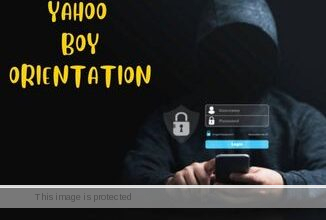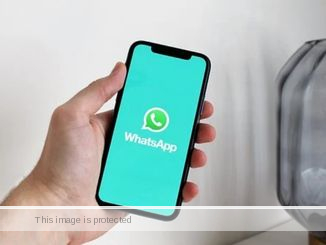Consignment Billing Format for Yahoo Client (PDF Download)
Some people are seeking for military consignment billing format for yahoo client, fake parcel engineering, and 419 scammer format for consignment box delivery pdf download.
The goal of this post isn’t to promote fraud, but to create awareness because understanding how scammers operate will help you identify and avoid potential scams.
So, if someone wants to use the consignment billing format on you, immediately you should end the conversation and disappear!
Consignment Billing Format
The consignment billing format is essentially a scheme designed to deceive clients into believing that the fraudster has strong feelings for them by sending a gift.
Subsequently, the scammer exploits another profile to extract as much money as possible from the client.
This format is exclusively employed for clients with whom the swindler has established a seemingly genuine rapport.
The swindler takes extra precautions to ensure that the client remains unaware and unsuspecting, thus preventing them from uncovering the deception.
- A scammer will promise to get a client a gift he/she has been craving for.
- Sign up online on sites with a profile as a miner with a Chinese firm to find potential clients.
- Chat with clients and maintain decent relationships.
- Make the client fall in love.
- Ask what gifts they want.
- Sign up on a courier website that would allow the client to track their gift and packages.
- Ask clients if they want them to send a gift and deliver it straight to their location.
- Swindler will generate a fake tracking number for the gift and makes sure the description reflects the “name of the gift.”
- Sends the fake tracking number to client to see that their package is already close to them, giving them the hope that they will receive what they’ve craved so much.
- Get a US phone number and someone with a good American accent to respond to inquiries and complaints.
- Scammer will later get to reach the client after a while with another profile (professional email address and website) with the name of their fake or inexistent brand.
- Using the website, inform client that the gift (Gold, Diamond, or something super expensive) has been seized and delayed by a courier service that will deliver the gift because of its illegal nature.
- Once the gift gets delayed, client is told that the fault is from the courier service.
- If the client tries to know the situation of things, client is told that Gold is being sent and may be flagged.
- Scammer informs the client that the total amount of gold would be worth $300,000 if sold.
- Bills client with a $500 clearance fee.
- After the payment, bill them with the delivery fee, which is usually around $1,000.
Presently, the scammer is expected to utilize the official email address of the courier brand associated with the client and impersonate the courier company.
They employ the following lines to establish contact:
Dear Jane,
We sincerely apologize for the delay in delivering your consignment with package number [insert package number] and tracking number [insert tracking number].
The delay is due to the package containing a substantial quantity of Gold, which necessitates investigation by the appropriate authorities to ascertain the reason behind such a gift.
We appreciate your patience, as the investigation is estimated to take approximately seven months to complete.
If you wish to expedite the process, please respond to this email, and we will direct you to our investigation team.
In the meantime, we kindly request that you reach out to the sender of this item for further clarification.
Best regards,
Patrick Edinson
Package Delivery Format for Yahoo Client
Package delivery scams are a type of fraud where scammers attempt to deceive individuals by posing as legitimate delivery services or carriers.
They often exploit people’s anticipation or concerns about package deliveries.
Scammers employ various tactics in parcel delivery scams to obtain your money, personal information, or infect your device.
They may reach out to you via SMS, email, or phone call, claiming that there is an undelivered package or item awaiting pickup at a distribution center.
These scams often impersonate well-known parcel delivery services such as TNT, Australia Post, or FedEx.
In email communications, scammers try to create an appearance of legitimacy by including your name, address, and professional-looking company details.
Online shoppers, in particular, should remain vigilant against fraudulent parcel delivery scams that arrive in their email or SMS inboxes.
1. SMS Scam
Be cautious if you receive a text message claiming that a package is being held at a distribution center.
The message may urge you to click on a link, which leads you to a webpage designed with TNT logos, a fake tracking code, and another link to “track the item.”
Clicking on this link redirects you to another page displaying supposed package details, where you are then prompted to pay a $2.00 custom fee to “schedule delivery now.”
The final link takes you to a streaming or entertainment service that entices you to sign up for a “free” trial period by entering your credit card information.
If you provide your financial details, you will unknowingly be enrolled in a subscription that costs $79 per month, with the possibility of additional charges deducted from your account.
Exercise caution and avoid sharing your credit card details with such fraudulent services to protect yourself from unauthorized charges and potential financial losses.
2. Email Scam
You may receive a message claiming that you have an “undelivered item” and will be subject to a holding fee.
In such cases, you might be instructed to open an attachment, click on a link, or download a file to retrieve your parcel.
However, it is crucial that you DO NOT CLICK ON ANYTHING.
These instructions are likely a trap to trick you into downloading a ransomware virus that will lock your computer.
The scammers behind this scheme will demand payment, either in the form of or via wire transfer, in exchange for unlocking your computer.
Even if you decide to pay the fee, there is no guarantee that you will regain access to your computer.
3. Phone Scam
Beware of scam callers pretending to be from Australia Post, claiming they were unable to deliver a parcel.
They may offer redelivery but require you to pay a fee upfront.
The payment amount may vary, and scammers may request payment through methods like credit card or international wire transfer.
They may ask for personal information, such as your credit card or bank account details.
If you have doubts about the authenticity of a call, it is crucial to HANG UP and not commit to anything.
Instead, contact the company directly using the official customer service number provided on the Australia Post website to verify the call’s legitimacy.
Never use the contact details provided by the caller, as those numbers are likely connected to the scammers.
To protect yourself from package delivery scams, it is important to be aware of the following signs and take precautionary measures:
- If you receive a notification about a package delivery from a courier or delivery service, verify the authenticity of the message.
- Contact the courier directly using their official website or phone number to confirm the status of the package.
- If you receive a package you did not order or have no knowledge of, be cautious. It could be a tactic used by scammers to trick you into providing personal information or paying for something you didn’t purchase.
- Verify the legitimacy of the delivery service by visiting their official website.
- Be wary of unexpected requests for payment, personal information, or account credentials related to package delivery. Legitimate delivery services typically do not require such information via email or text.
- Avoid clicking on links or opening attachments in delivery-related emails or messages from unknown or suspicious sources. They may contain malware or lead to phishing websites.
- Pay attention to email and website addresses.
- Avoid providing sensitive personal information, such as Social Security numbers, financial details, or passwords, in response to unsolicited requests related to package deliveries.
- Enable two-factor authentication whenever possible for your online accounts. This adds an extra layer of security and makes it more difficult for scammers to gain unauthorized access.
Conclusion
In order for this format to function properly, the fake courier website is crucial.
Therefore, exercise caution when encountering a website where the individual you’re conversing with requests you register and disclose your information.
Only proceed if it is a trusted site, and refrain from clicking on any links shared by the person.
By staying vigilant, verifying the legitimacy of delivery notifications, and being cautious with your personal information, you can reduce the risk of falling prey to package delivery scams.






